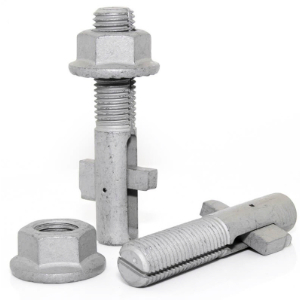Blind Bolts Vs Fang Bolts
Blind Bolt US | 29th July 2021

Blind Bolts Vs Fang Bolts
Despite the fact that multiple types of fasteners are used globally across a wide range of industries, all fasteners have the same basic function – that of joining (i.e. fastening) two or more objects together.
This article will examine two types of fastener in detail – blind bolts and fang bolts.
What are Blind Bolts
Blind bolts are a popular type of steel fastener, combining strength with versatility. They have been developed to provide strong and durable connections on occasions when other fasteners, such as hex bolts and rivets, are less likely to do so.
Blind bolts have been used as fasteners in a range of manufacturing sectors for several decades, and are prized for the versatility they provide thanks to coming in a wide range of designs and sizes. They are referred to as blind fasteners because they can be installed from just one side of a join via a pre-drilled hole, without the other side of the join having to be accessed. This ease of use makes them the ideal fastener for situations such as bridge construction and girder cavities,
The standard blind bolt consists of three components – a steel pin, a collar and a sleeve. They can be installed using a specific blind bolt tool which operates in a similar manner to a riveter. The ease of installation means that blind bolts can be utilized without in-depth training, but it is still important to take the time to choose the correct blind bolt for each specific task. Factors including tensile strength and corrosion resistance need to be taken into account when selecting the right blind bolt for any job, and the same applies to other types of fastener such as the fang bolt.
The Benefits of Using Blind Bolts in The Rail Industry
Blind bolts are one of a number of different fasteners which are widely in use across the rail industry, but have emerged as the top choice in the UK. This is because they provide a high-performance fixing solution which is reliable and durable when installing automatic warning system (AWS) units onto steel sleepers. Nothing matters more than safety within the rail industry, and blind bolts meet the kind of rigorous high standards demanded from rail construction work. .
Our article on blind bolts and the transportation industry outlined the way in which blind bolts can quickly and simply fit AWS units onto steel sleepers as part of any rail construction project. They are used in the manner across the UK thanks to the strength and durability they offer, as well as the ease with which they can be applied. The use of blind bolts means that construction projects can be completed quickly and efficiently, minimizing the disruption faced by rail operators and their passengers.
What Are Fang Bolts?
Fang bolts have a number of different uses, the most common of which is to attach ironwork components to wood. The name derives from the fact that the head of each bolt features a fanged design which bites into the timber in question.
Fang bolts are also sometimes called ‘rail anchor bolts’, and are frequently utilized in the rail industry. Despite the fact that fang bolts and rail bolts both feature in the rail industry they shouldn’t be confused, as each has an entirely different purpose.
The Benefits of Using Fang Bolts in The Rail Industry
Fang bolts are widely used within the rail industry because the unique fanged design is perfectly suited to gripping onto the lower surface of a sleeper. Once in place, the entire assembly of the bolt is unable to move or shift in any direction, having been designed to resist the forces associated with moving trains which weigh several tons. Fang bolts offer a much more reliable fastening than the alternatives of spikes and screws, and so are often placed in locations calling for maximum stability, such as sharp twists and turns in the track.
Blind Bolts Vs Fang Bolts
Blind bolts and fang bolts both have much to offer for use in the rail industry. Blind bolts – as detailed above – are particularly suited for the installation of AWS units, thanks to the durability and safety they offer, while fang bolts have a vital role to play in areas likely to experience high levels of vibration. Despite the differences between them, both types of fastener provide undoubted strength and reliability, which is why they feature extensively across all parts of the rail industry.
Why Wait? Take the Next Step Today
Don’t wait, take the next step today by checking out our guide, ‘What Is A Blind Bolt and What Is It Used For’, by clicking here. Alternatively, you can contact our team by using our quick and easy contact form below. You can get in touch and speak to a member of the BlindBolt team today on (630)882-9010 or by emailing us at enquiries@blindbolt.com. We look forward to hearing from you.